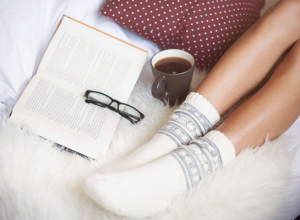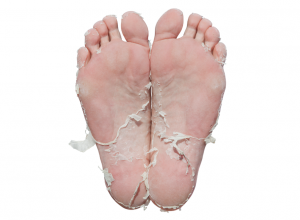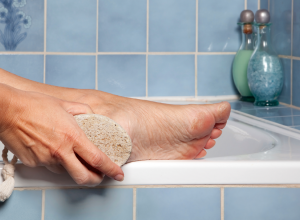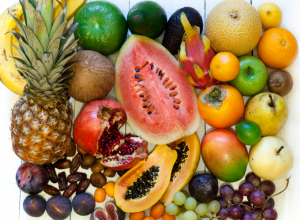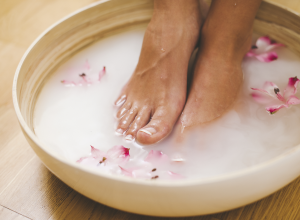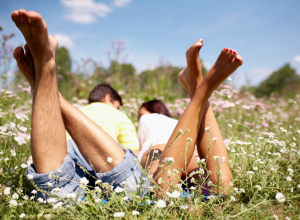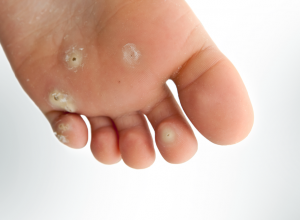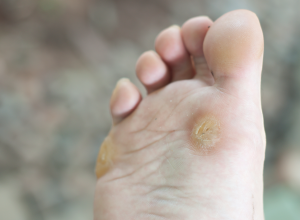
Corn
A corn, also known as a heloma or clavi, is a circular area of skin that has become tough, hard and/or discolored due to repeated friction, pressure, dry skin or other irritation. The medical term for this area of tough, dead skin is called hyperkeratosis. A heloma is different from a callus (another hyperkeratotic ailment) in that it is usually conical, circular or popular in shape, whereas calluses are generally diffused and flat.
Symptoms
There are four types of corns: a soft corn, a hard corn, seed corns, and Heloma Molle. Each has its own look and feel, but all of them are usually painful. Hard corns are small patches of spherical thick, dead skin with a central core. Soft corns have a thin surface and usually appear between the toes. Seed corns are tiny, tender bumps that generally appear on the plantar (sole) area of the foot. Seed corns often get confused with the small plantar pits that come along with conditions like psoriasis. Corns located between the fourth and fifth toe are called Heloma Molle, and these corns are particularly painful as they are located in a very tender area of the foot.
Causes
The most common cause of corns and calluses is wearing uncomfortable, improperly fitting shoes that rub against the feet. Your skin begins building a protective layer in order to shield itself from further irritation. Other things that can cause corns and calluses include a change in gait and foot abnormalities like bunions, hammertoes, claw toes and other toe deformities.
Treatment and Prevention
Surgery to remove corns and calluses is rare, however, since corns can be excruciatingly painful, it may be worth seeing a podiatrist who can help in their removal as well as suggest footwear options and orthotic devices that can relieve some of the discomfort. Many sites like WebMD, MedlinePlus and MedScape all agree that in most cases, corns and calluses do not need professional attention from a podiatrist or orthopaedic surgeon. The exception is if you have diabetes or another health condition that affects your circulation. If so, professional care for corns and calluses is necessary.
If you do not have diabetes or other diseases that affect your circulation, there are many effective home remedies to help in your battle against corns and calluses, including foot soaks and topical mixtures you can make with ingredients you may already have on hand. You may also use bandages with holes in the center to help alleviate the pain. Do not attempt to shave away corns and calluses on your own. That removal method is best left to podiatrists, as doing it yourself can be dangerous.
Corns and calluses can be prevented by wearing comfortable, properly fitted footwear that doesn’t rub your skin or pinch your toes. Shoe pads and cushions can also be helpful, especially if you have foot abnormalities like bunions and hammertoes.
Notice concerning medical entries:
Articles having medical content shall serve exclusively for the purpose of general information. Such articles are not suitable for any (self-) diagnosis and treatment of individual illnesses and medical indications. In particular, they cannot substitute for the examination, advice, or treatment by a licensed physician or pharmacist. No replies to any individual questions shall be effected through the articles.

